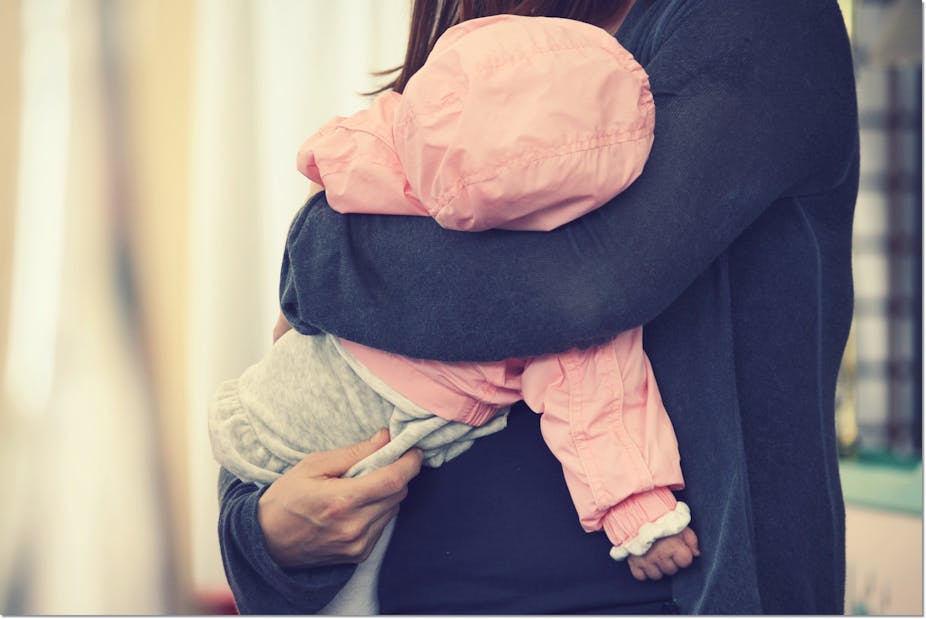The current debate about commercial surrogacy has focused on the competing needs of couples or individuals desperate to have children, and the exploitation of vulnerable women in low-income countries. But no one seems to be talking about the rights of the child.
This is particularly odd because the debate, which is loosely constructed around the competing desire of people to be parents and of women not to be exploited, is couched largely in the language of rights. The proposed solution for settling these competing desires is legislation that supports commercial surrogacy.
Rights vs desires
Claims to rights do not, in and of themselves, create rights. International law recognises both the right to found a family (article 16), and the right to benefit from scientific progress (article 15).
But neither of these rights, however cobbled together, can defensibly form a right to outsourcing the creation of child. Indeed, the creation of a child through commercial surrogacy could not have been contemplated in their origin.
Since the claim to create a child by means of a surrogate mother falls short of characterisation as a right, how is this claim to be understood? It is most readily recognised as a desire or interest.
The strongest argument for recognition of these desires or interests is that of same-sex couples. A same-sex couple will always be incapable of creating a child without the involvement of a third party.
But this lack of capacity doesn’t produce the right to a child, let alone the right to a child resulting from a contractual arrangement. Although the desire for a child may be great, desires are not rights.
What of the rights of the surrogate mother? We recognise the right to work, but that can be equally satisfied in ways other than commercial surrogacy.
Commercial surrogacy may seem to many women in low-income countries, and their families, as the best option for alleviating poverty. But that’s not a compelling argument for regulating commercial surrogacy.
Rather, it calls for addressing the poverty, limited opportunities and education of women, which together serve to create the environment rendering such arrangements an attractive option.
Analogies may be drawn with the arguments in support of the right of sex workers to perform sexual services for payment as an occupation. But in sex work, pregnancy is a hazard to be minimised. Children are not an intended outcome of that commercial act.
Rights of the child
And where in the surrogacy debate do we recognise the rights of the child? Of each of the parties involved in commercial surrogacy, the only party possessing unarguable and inalienable rights is the child born of commercial agreements.
Enshrined in the Convention on the Rights of the Child, this guarantees the right to dignity, protection from sale or trafficking, registration of his or her birth and to know his or her parents.
In writings about adoption and IVF, there is a strong body of evidence demonstrating that children are profoundly interested in their parentage.
In surrogacy arrangements, whether commercial or not, if there’s a falling out between the gestational mother and the parents (who may or may not be genetically related to the child), the child may never know who gave birth to him or her. This risk is magnified in international surrogacy.
The experience of commercial surrogacy agreements in recent years has seen children languish stateless when their personal circumstances change and commissioning parents no longer want the child. And it’s not only because of disability that a child may not be claimed by his or her commissioning parents.
In the interim between commissioning the surrogate and the birth of the child, parents may separate or divorce, or one or both parents may be severely injured in an accident or a parent may die. Commissioning parents may change their minds.
What point would there be in enforcing contractual or personal arrangements under these circumstances? Is it really conceivable that society would (or, indeed, could) force parents to rear children once they’ve decided they would rather not?
These are not fanciful risks. Cases dealing with surrogacy contracts gone wrong have been determined by courts elsewhere, none happily.
An inalienable responsibility
Internationally recognised human rights often conflict. When they do, a balancing exercise is required to minimise the restrictiveness of the outcome. But in this circumstance, what we’re seeking to balance are strongly held desires against internationally and nationally recognised rights.
A child should neither be thought of as a vegetable nor a puppy able to be acquired as the result of a commercial transaction. This violation of the dignity of the child says something about those who are content to return to historic understandings of a child as the property of its parents or, more correctly, its father.
We can’t ensure that all children will be born to loving parents to whom they are genetically related. Parents may abuse and abandon their children and not all parents are genetically related to their children.
But surely we don’t need to create a scheme in which the immediate desires of adults are knowingly placed ahead of the rights of the child. It’s also hard to see how permitting commercial surrogacy in Australia will resolve the problem of the difficulties for all parties entailed in enforcing surrogacy contract.
The cacophony of voices in the surrogacy debate is silenced only with recognition that the individual without choices and with rights is the child.
We’re yet to realise the rights of baby Gammy. He has a sister, he has a commissioning mother, and he has a commissioning father, through whom he has siblings. He has a surrogate mother with whom he has a clear bond.
And, equally, he has inalienable rights. We bear an inalienable responsibility to protect and prioritise these rights.

